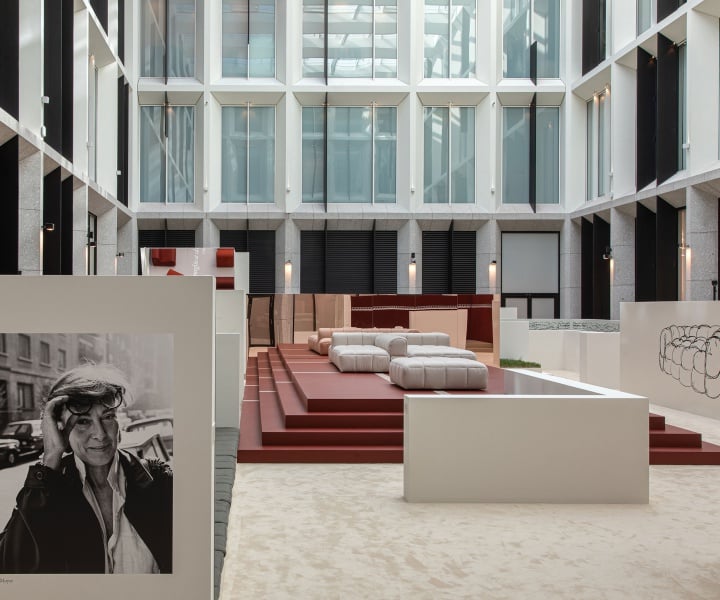| Detailed Information | |||||
|---|---|---|---|---|---|
| Project Name | Skyscraper (The Bruges Whale) | Posted in | Installation | Year | 2018 |
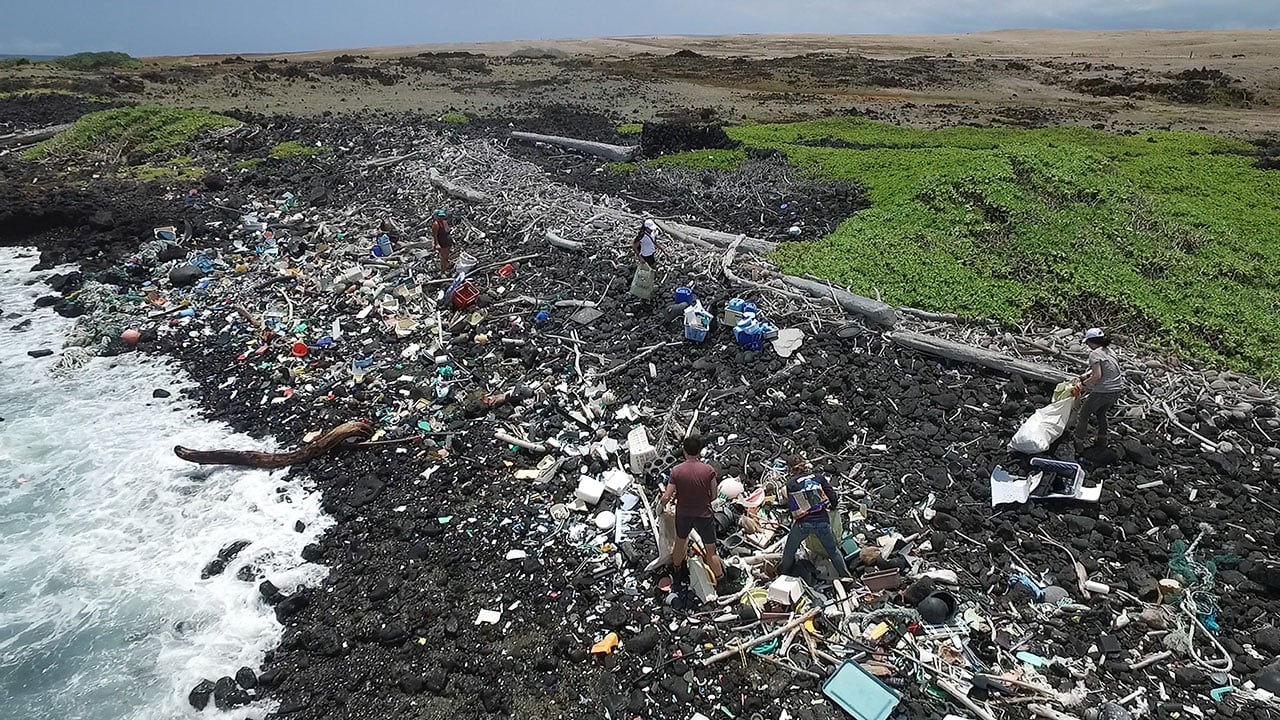
Jason Klimoski and Lesley Chang of StudioKCA collecting plastic in Hawaii. Photo by Alejandro Duran.
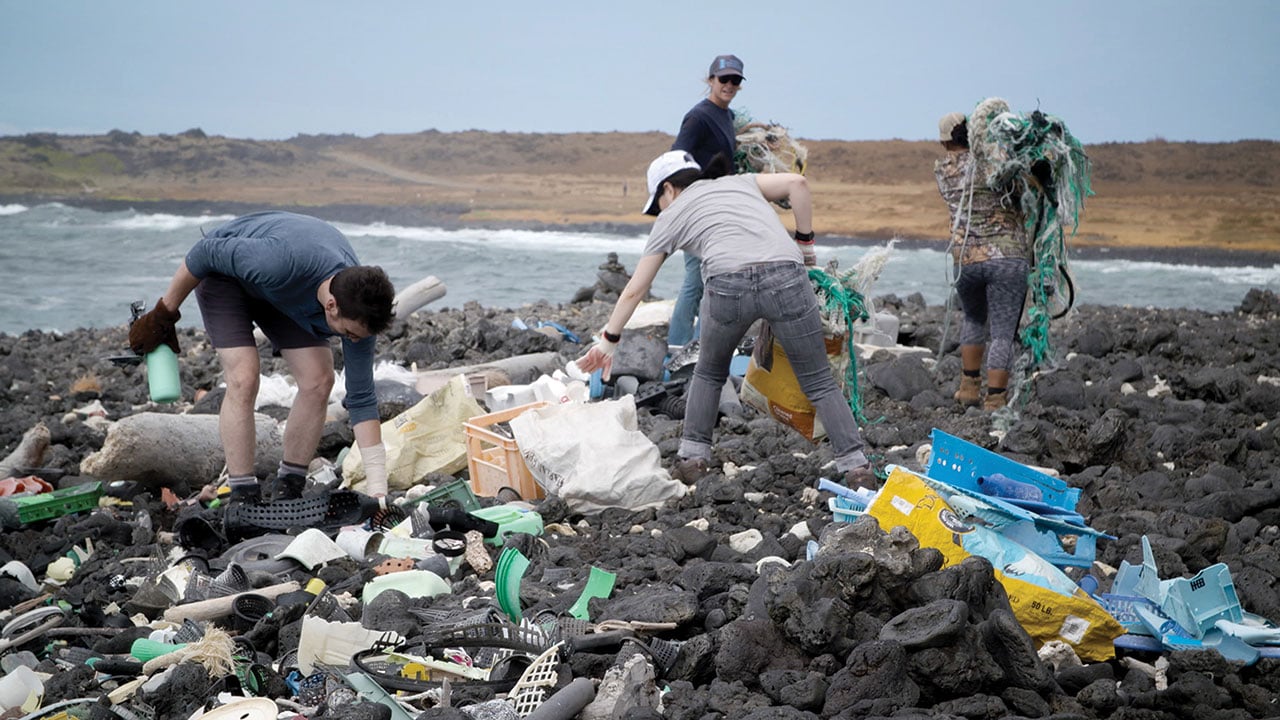
Jason Klimoski and Lesley Chang of StudioKCA collecting plastic in Hawaii. Photo by Alejandro Duran.
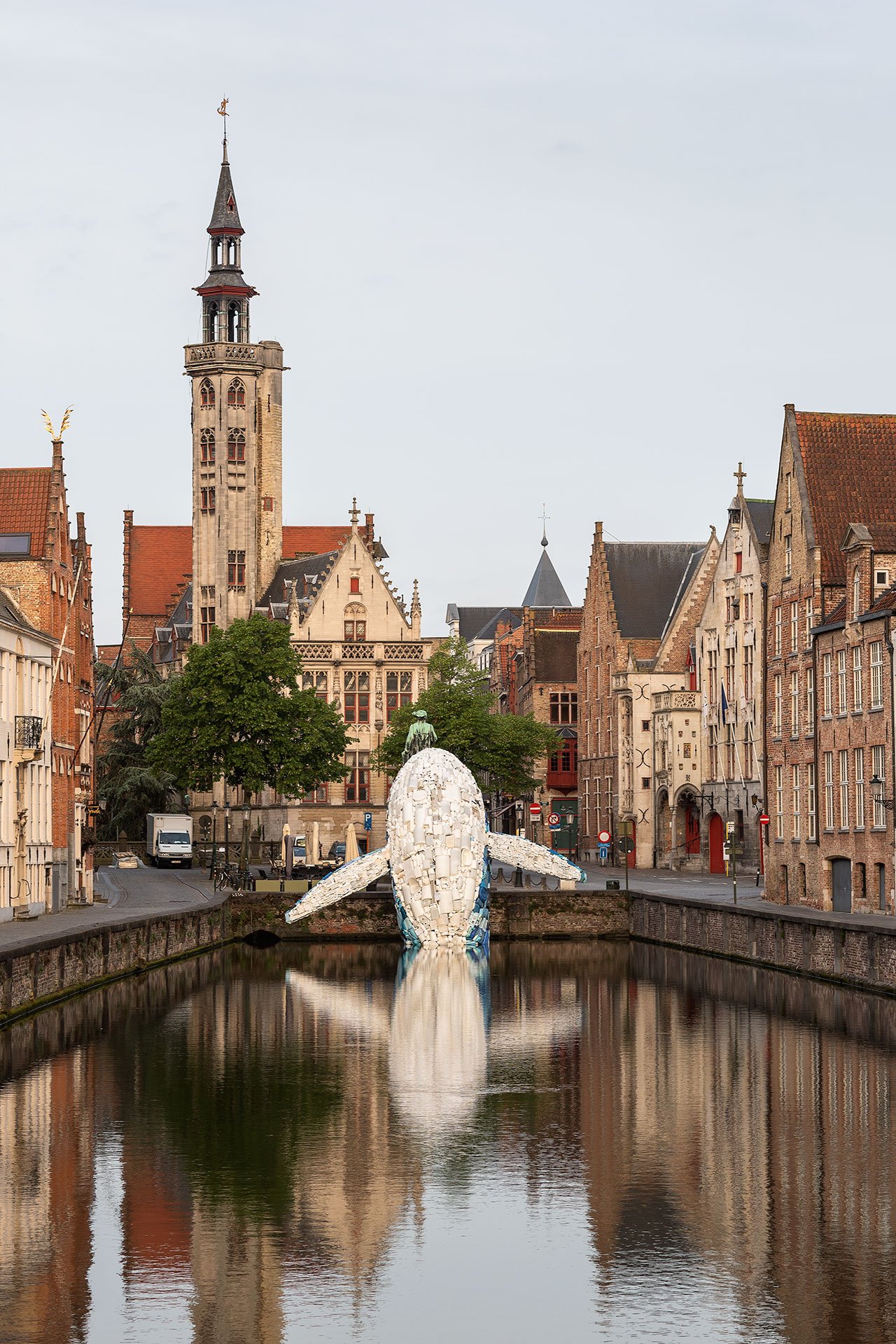
Photo by Matthias Desmat.
The five tons of plastic waste that was used to build the "Skyscraper" was collected from the beaches of Hawaii with the help of volunteers from the Hawaii Wildlife Fund and the Surfrider Foundation. The collected items, which ranged from hangers and kitchen bowls to toilet seats and car bumpers, were transferred to upstate New York where they were cleaned, separated by colour, and assembled onto a steel and aluminium framework. The whale was transported to Bruges in two parts where it as erected in the canal, a remarkable feat of engineering considering that the five tons structure cantilevers off its base.
The city’s waterways, a metaphor for the Triennial’s Liquid City theme, are the perfect setting for The Bruges Whale demonstrating how interconnected the world is. If a plastic cup you carelessly drop into the canal can ends up thousands of miles away polluting the oceans, then a whale making its way to the city via the canals seems a fitting comeuppance. As Chang explains, "Skyscraper is a physical example of why we need to change how we use and dispose of plastic in the world today". Indeed, as the enormous plastic whale jumps out of the canal, visitors are confronted with a grim reality that the consumerist society we live in insulates us from.
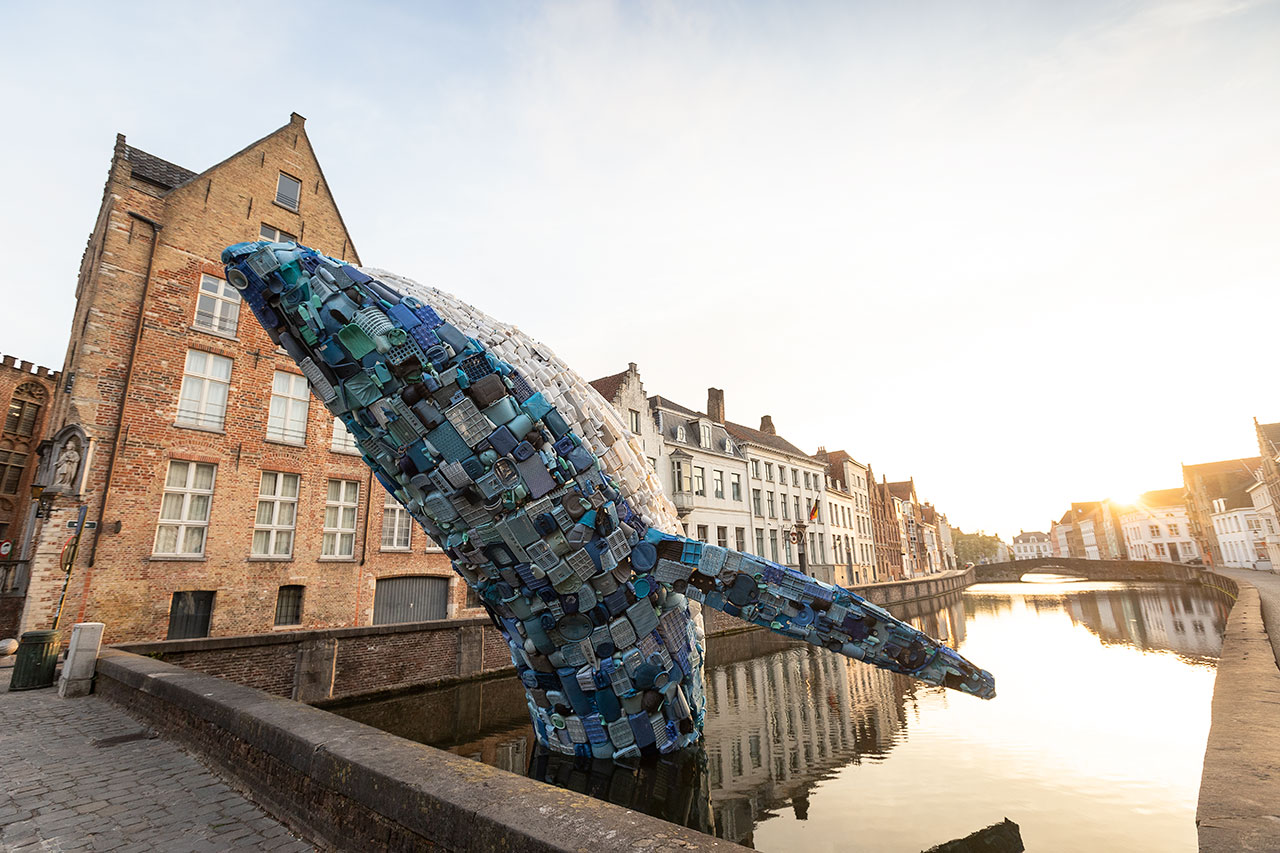
Photo by Matthias Desmat.
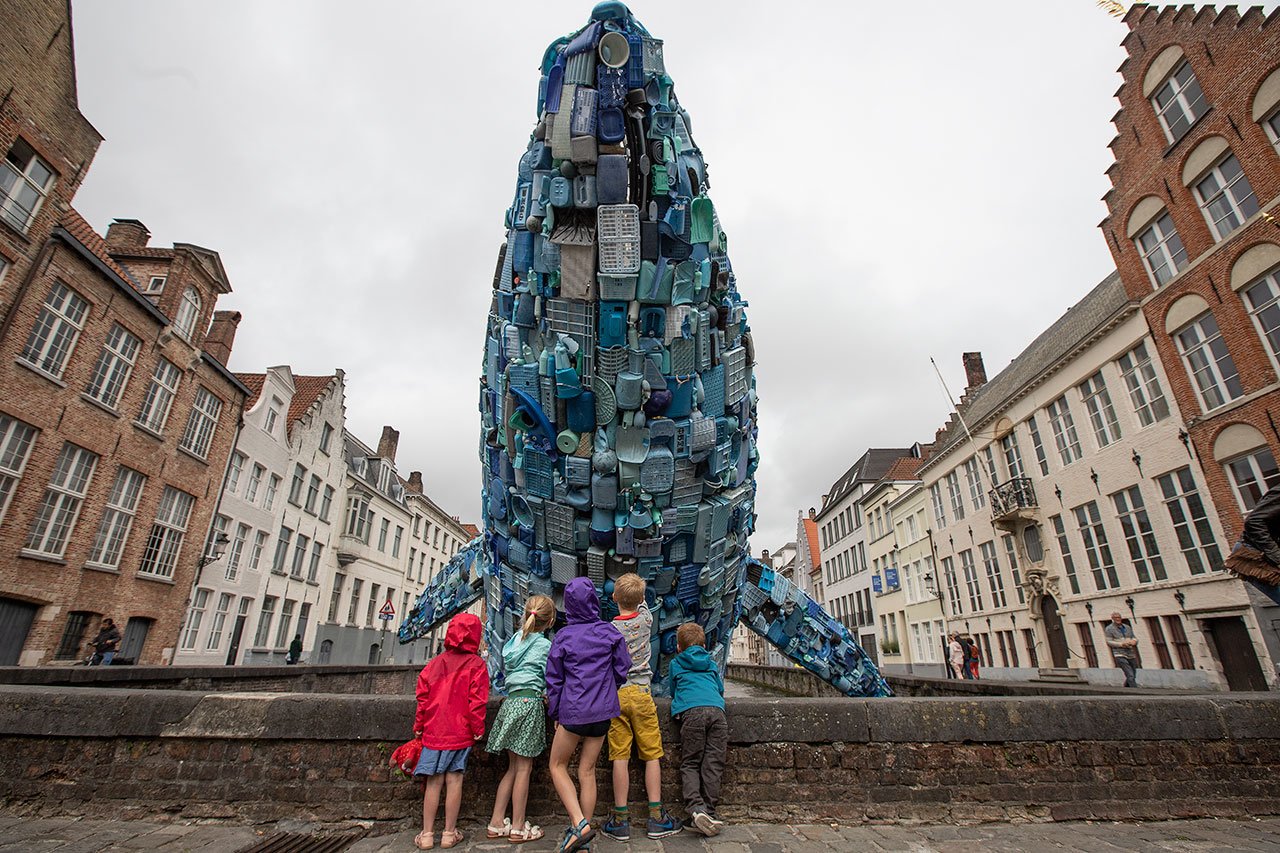
Photo by Matthias Desmat.
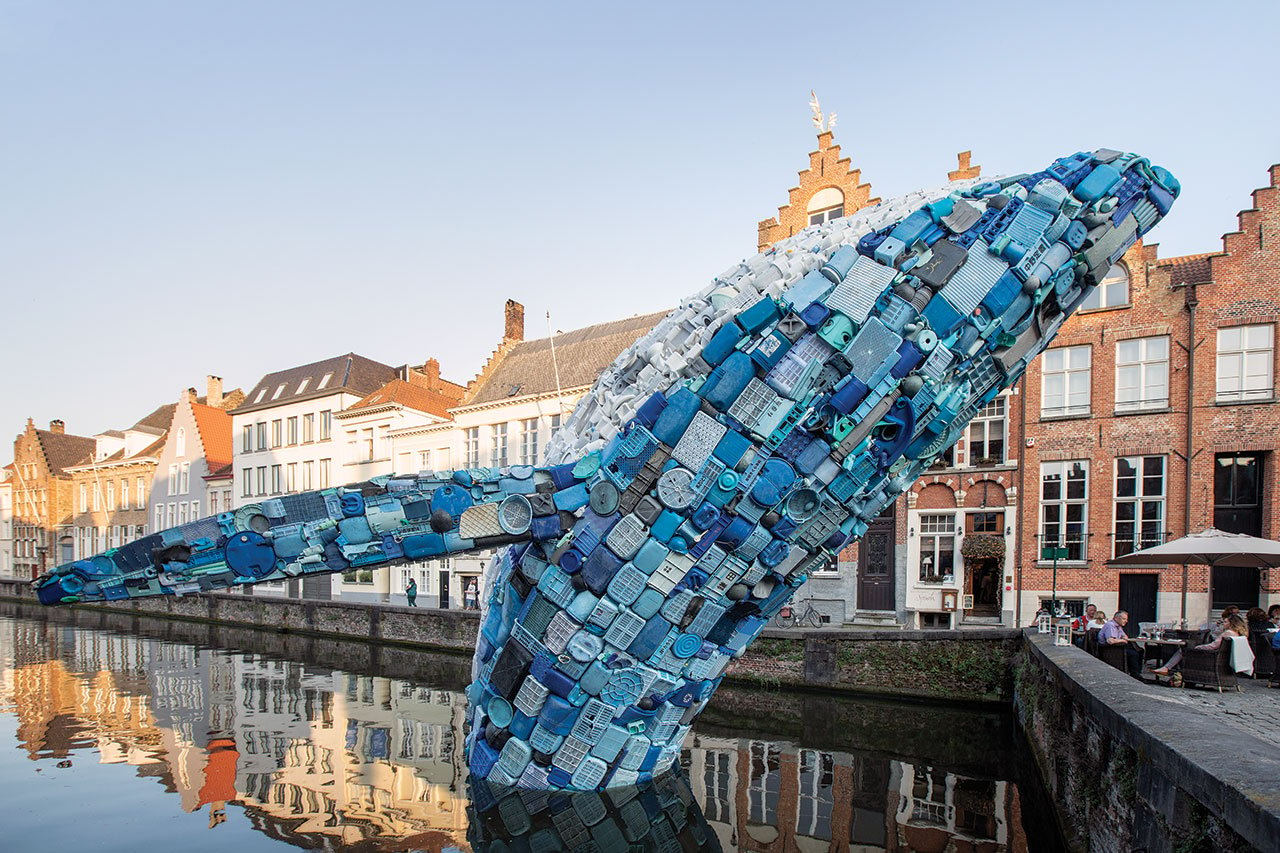
Photo by Matthias Desmat.
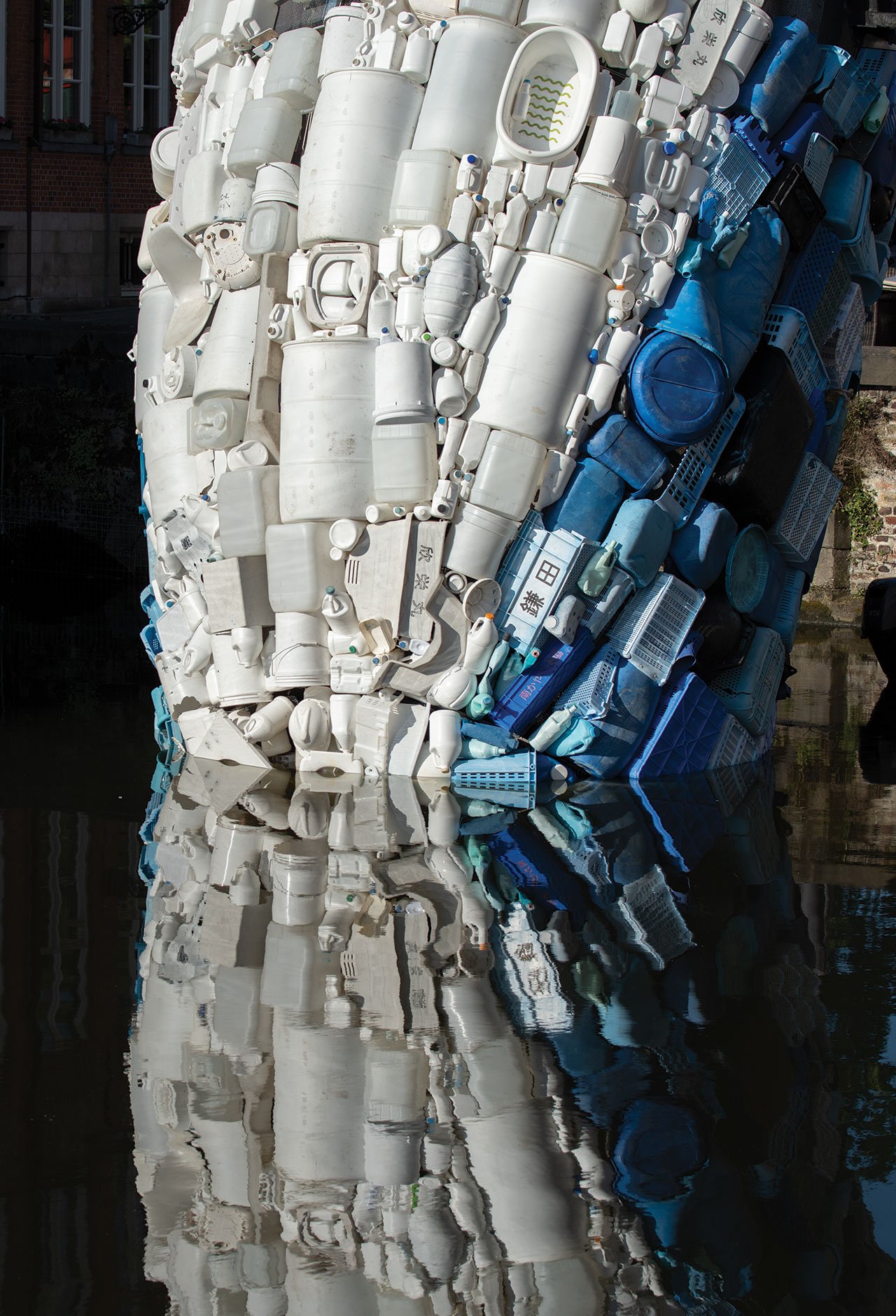
Photo by Chuck Choi.
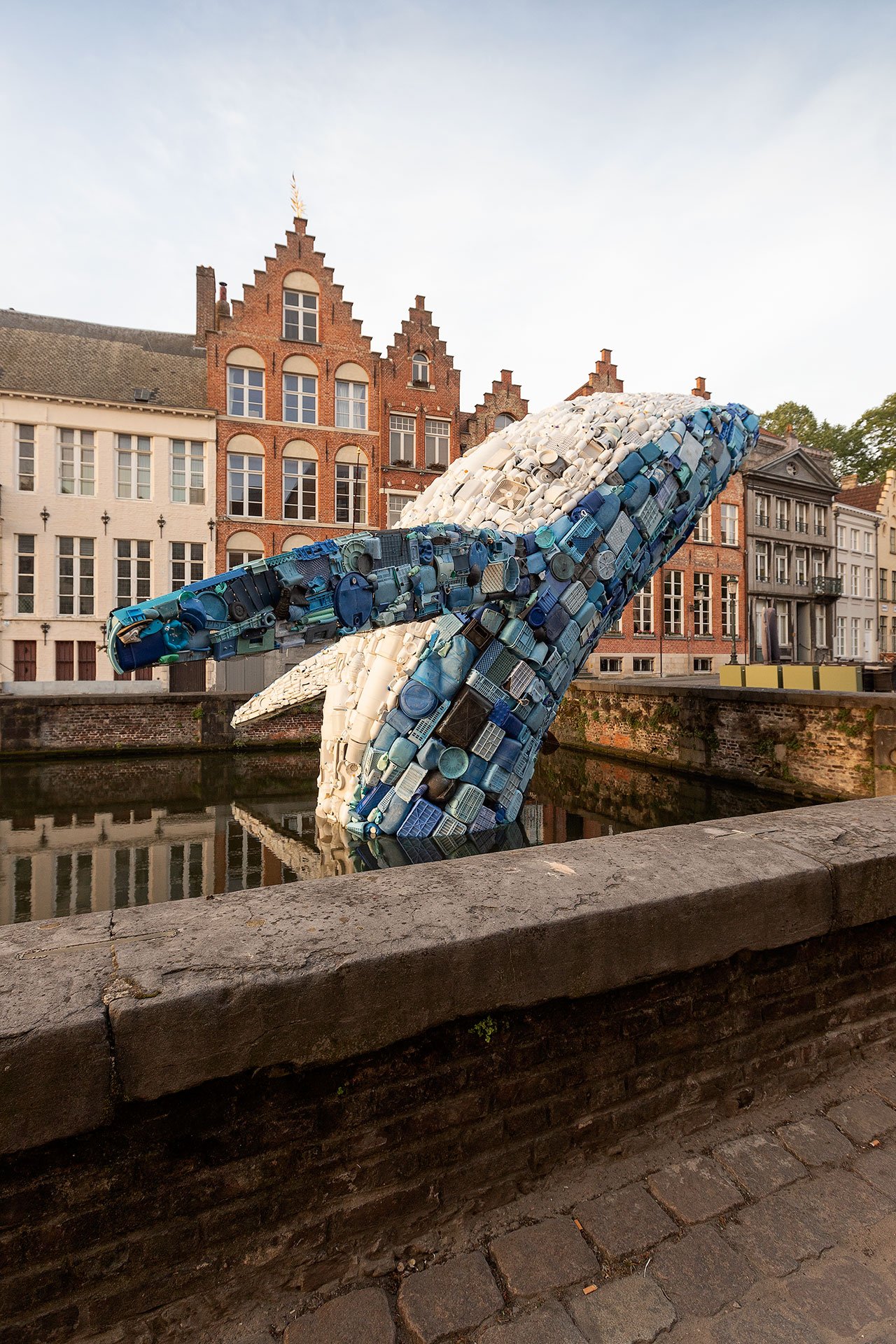
Photo by Matthias Desmat.









